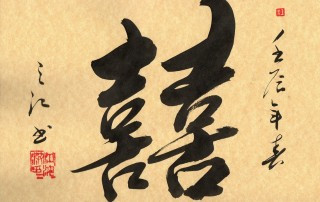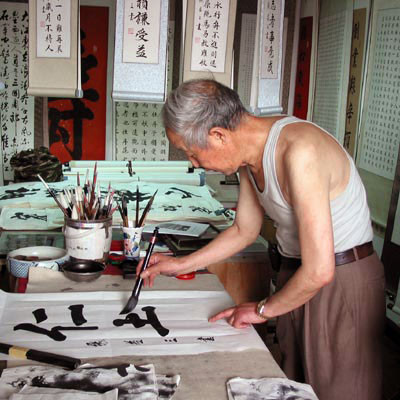Whether you take part in our Internship Program or attend our cultural activities several times a week for all its students and their friends. These events are the perfect opportunity to relax with friends, have some fun, find out more about Chinese culture and also spend some time with the Hutong School community.
Our cultural activities allow our students and interns to familiarize themselves with Chinese art, food and traditions to get a better overview of what makes this culture so unique. The range of our activities is extremely wide, from learning how to play board games like Mahjong or Weiqi to Kungfu lessons, and from acrobatic shows to cooking lessons!
Yuyuan Garden (Yù Yuán, 豫园)
Surrounded by the Tourist Markets, Yuyuan Garden (‘Garden of Peace’) is the perfect location to lose track of time – and often also place. The garden basically consists of six different areas; all of them representing different styles of Chinese architecture, gardening, and culture. It was built for the parents of a government officer as a recreation park in the Ming Dynasty, but what can be seen today is the result of a restoration after the Opium Wars in the 1840’s and 50’s. Back then the garden was severely destructed and is now only about half its size. But even before that, Yuyuan Garden had undergone many years of change: once, more than 250 years ago, it was bought by rich businessmen which spend 20 years of time to create their own version of the garden. Only since 1961 visitors are able to enter the park, which is now surrounded by a massive wall which keeps all the street noise outside and makes Yuyuan Garden a perfect getaway! It is a must if you are staying in Shanghai, and this weekend the Hutongers had the chance to experience the ancient Chinese spirit themselves.
While strolling through the narrow alleys of the Tourist Markets everyone was able to buy gifts and souvenirs. From notebooks to Chinese sweets, from toys to handicrafts, there is everything you would want! The stores are in ancient buildings of different architecture types, and while they are modern inside, you can admire the fantastic Chinese style on the front. Making our way through the crowds we had a hard time keeping orientation, as all the streets and alleys look more or less the same. Plus, the decoration is just too overwhelming to remember which way we came! To have a break from all the hassle the Hutongers split: some wanted to try local specialties at the food stores, others preferred the well-known menu of the Western fast food chains. A few people decided to dine at the tea house in the lake – the ultimate Yuyuan Garden experience! To end the day at Yuyuan, we visited the City God temple which is an ancient temple dedicated to two deities from the 14th century.
During the day at Yuyuan everybody in the Hutong group could discover their own favorite spot, and they learned a lot of the garden’s history. The bags full of souvenirs testified the success in shopping and at the end of the day everyone enjoyed themselves to the fullest and is convinced: only when you have visited the Yuyuan area you have seen Shanghai!
Chinese Calligraphy (Shūfǎ 書法)
 Having a calligraphy master at Hutong School was a great opportunity to gain unique insight in the subtle art of painting 汉字, which is an important part of the Chinese culture. Originating from the ancient China, the rules for the ‘way of writing’ never experienced major changes and are very strict. By learning about the beginnings of Chinese Calligraphy we also learned about the history of characters, as this is linked to each other. Although being an appreciated calligrapher takes a lot of time, education, practice and skill, the evening lesson taught us a lot about the background and surroundings. Who, for example, would have known that the ink stones and paper weights used are seen as art objects? Together with the brushes and the paper they form the Four Treasures of the Study and are often personalized.
Having a calligraphy master at Hutong School was a great opportunity to gain unique insight in the subtle art of painting 汉字, which is an important part of the Chinese culture. Originating from the ancient China, the rules for the ‘way of writing’ never experienced major changes and are very strict. By learning about the beginnings of Chinese Calligraphy we also learned about the history of characters, as this is linked to each other. Although being an appreciated calligrapher takes a lot of time, education, practice and skill, the evening lesson taught us a lot about the background and surroundings. Who, for example, would have known that the ink stones and paper weights used are seen as art objects? Together with the brushes and the paper they form the Four Treasures of the Study and are often personalized.
With a lot of theoretical knowledge everyone was excited about trying themselves. First, the ink had to be prepared, as our teacher told us. The ink stone has a special form, so that the ink pen can be rubbed over the flat side and then mixed with the water. Only with a certain density of the ink the paintings will be perfect – fortunately nowadays we can use prepared ink, although this is not very appreciated within the performers of the art. The most difficult part of creating our own sheet of perfectly written hànzì was probably remembering the right stroke order! The rules of calligraphy require correctness and accurateness, so everyone was really focused on writing in the most beautiful possible way. After all, the Hutongers created a great souvenir of their time in China and learned a lot about Chinese culture. We could not only take home our own calligraphy but also some valuable knowledge!
Check out our creations on our pictures page.
Have a look on our upcoming event page to find out more about future activities in Beijing and Shanghai!
Theresa Hirsch
Marketing Assistant Intern
